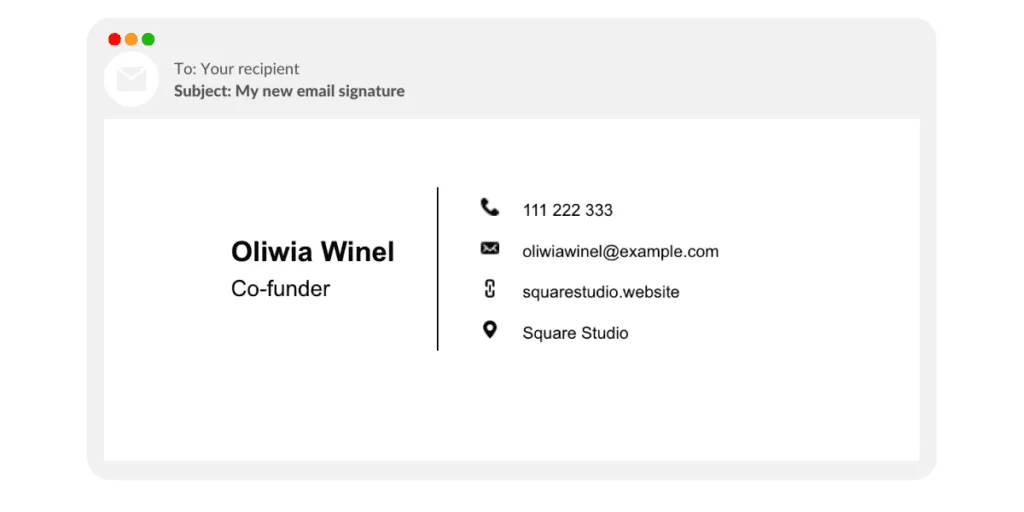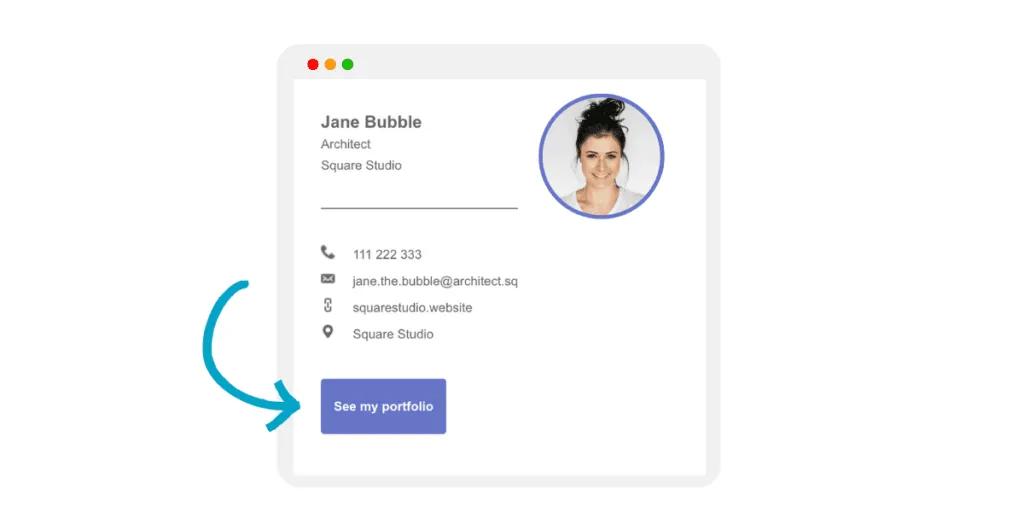How you close an email is important, especially if you are sending a business or marketing email. The words you choose when writing the ending of your email may be deciding if you make a good or bad impression.
A professional closing helps ensure that the reader is left with a good impression of you and your business, while no closing or an unprofessional email ending could have the opposite effect.
When it comes to ending an email, what you write can be more important than you may realize. Some ways to end an email can be better than others, depending on who you are emailing and what your main goal is. Your email signature can make a massive difference to your email closing and the impression it has on your recipients.
Here is how to do sign-off in your professional emails, if you want to ensure better response rates and overall metrics, as well as improve the impression about your brand.
Why does email sign-off matter in professional emails?
Most people close an email without giving it much thought. You can put something like ‘Thanks’, ‘Kind regards’, or even ‘Have a nice day’. However, putting more thought into how you end your emails can make a huge difference to the outcome.

A good business email closing can help to identify you as the sender for future reference, motivate the recipient to take further action, provide the recipient with further contact information, or simply leave the reader with a good first impression of you and your business which is especially important if you are dealing with a new customer.
The closing phrase that you choose for your email is the last thing that your audience reads after they finish your message. Whether you’re sending formal emails for your business or personal emails to individual contacts, the way you end an email matters.
It can be one of the most motivating factors when it comes to the actions that they take, as a result of receiving your email, or whether they will take any action at all. After all, emailing is just another type of conversation, and how a conversation ends, tends to be quite important, be it business or informal emails.
If you met somebody new, you would not just turn around and walk away after talking with them without closing the conversation – you would probably tell them that it was nice to meet them and that you hope to speak to them again soon. Your email closing should be friendly, professional, and polite, along with being clear when it comes to providing instructions for the next steps to take.
How to close an email
When it comes to putting together the best closings for your emails, there are a few different things to keep in mind.
The first is to decide whether or not closing is an appropriate option for this email. If you are going back and forth in an email exchange with somebody, then skipping the closing may seem like a good option at this point.
However, if this is the case, then take some time to think about whether or not it will have a good impact if you include the closing. Even if you have been emailing somebody for quite a while and the conversation has become a little more casual compared to how it was at the beginning, you can show that you are professional and continue making a good impression by choosing a good closing each time.
Along with this, bear in mind that the person you send an email to may forward it to others, who have not communicated with you before. A strong, professional email signature in those email threads will give a more professional impression compared to more informal, personal emails.
Use your full name
It is a good idea to always include your full name when signing off your emails, especially in the first few emails that you send.
This allows you to ensure that the email recipient is clear when it comes to the identity of the person that they are communicating with, and you can avoid any confusion with other contacts who may have the same first name as you.
Even if you want a more casual email sign off and a friendly email correspondence, always include your full name.
Be professional
No matter what you decide to write in your email closing, professionalism is the key. Consider the context of the conversation and the person that you are emailing before deciding on the most appropriate type of closing to use.
You should avoid a casual tone if you email a new client whom you have not contacted before. While a friendly tone could be interpreted as a nice gesture, you want a more formal closing for the first time you reach out to someone.
On the other hand, if you are communicating with somebody whom you have met in person or have spoken to quite a lot over email and gotten to know quite well, then there is nothing wrong with being more casual, especially in follow-up emails.
If you are not sure about the best type of tone to take, it is always better to be too professional than not professional enough. This is why your default email signature should always be a more formal one.
What to include in an email signoff
A good business email closing includes several different elements that give it a complete, professional appearance and make a good impression on the recipient. When closing an email, some of the most important aspects include:
Your full name
Using your full name when signing off an email may feel too professional for some conversations, but it is usually best to do so. This will help you avoid any situations where you may be confused for somebody else who has the same first name as you.
If you want to take a more casual approach and use just your first name, then you could consider adding your full name to your signature, so it is still clear who you are exactly.
The closing line
When closing your email, a strong closing line can make all the difference to the impression that it makes on the recipient.
The closing line of your email is an ideal opportunity to share your gratitude with the recipient for reading the message. Along with this, you can also include a call to action or something to motivate the recipient to take the desired step, such as clicking on a link in the email, replying to you, or something else.

Remember, even if you’re sending out a casual business email, the ultimate goal of all email communications is to elicit a reply or some sort of action.
Your job title
While you do not always have to use your current job full title, it can be useful to include something to let the recipient know what your professional title is.
This is especially important if you are communicating with somebody for the first time, as it makes it clear who they are talking to, and the kind of matters that you could help them with. Business contacts appreciate this detail as they know whether or not to continue business communication with you or no.
Contact details
Finally, including your contact details is always a good idea. Although the recipient that you are emailing already has your email address, the closing of your email message is a good place to provide further ways to get in touch with you, such as your phone number or a link to your LinkedIn profile.
Most formal email sign-offs include other ways to get in touch. While it does not add much to business correspondence, it’s a rule of thumb to use this space to promote your LinkedIn, website, offer or something else.
Endings for email guidelines – best rules for email etiquette
When coming to the end of your email message, you do not want to ruin the good impression that you have made so far with a poor closing.
To avoid this and make sure that your email closing phrase leaves the best impression on your customer, keep the following guidelines in mind.
Consider the audience
It is a good idea to tailor your closing for the audience that will read it.
For example, the word ‘love’ might be ideal for an email closing to your significant other or your mum, but you should not use it when communicating with your new boss or a new client, who might not appreciate informal email endings.
Think about your relationship with the person that you are emailing. The most annoying email sign-offs are those that are not adjusted towards the audience they are going out to.
Proofread your default email signature
Just like the rest of your email, the closing should be checked for any spelling and grammar errors before you hit the send button. A closing that is riddled with grammar errors or spelling mistakes can give an unprofessional, sloppy impression to a recipient.
All it takes is a few minutes to quickly double-check your closing for any errors in most email apps. You can use plugins for grammar and spell checkers like Grammarly to make it easier to locate any mistakes.
Be sincere
Being realistic and genuine with your email closing has an impact on the impression that it makes. Do not just write words that you think sound good without taking some time to think about how genuine you are.
When choosing a closing line for your email, pick something that is genuine on your part be it internal emails or email conversations with new contacts.
Include the next step or call to action
Finally, do not miss out on the chance to use your email closing line as an opportunity to get the recipient to take the desired action. For example, this could be something as simple as a ‘hope to hear from you soon’, or ‘let me know what you think’ if you want the recipient to email you back. Or, if you are sending a marketing email, you can include a link to the service or product in the closing while requesting that the recipient check it out.
How you close a business email can have a bigger impact on the recipient and the impression you have on them than you realize.
Wrapping up
Whether you write casual emails or communicate in professional contexts, the way you end your email matters. Email is one of the most common methods of communication today and if you want to do it right, you should have professional email endings that encourage the recipient to respond.
And if you send out a lot of emails and you’re worried if they’re going to reach the right person… You need Bouncer. With Bouncer, you can verify your email lists, so that you’re sure that you’re not sending to fake, outdated or misspelled addresses.
Get started today and verify your first 100 emails for free!

